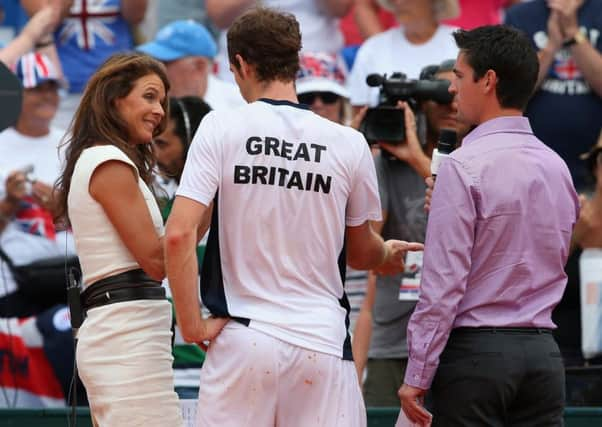Annabel Croft on why she always knew Andy Murray wouldn’t call it quits


But what the experiences gained in that time did allow her to do was make a prescient call that made her practically a lone voice in the immediate aftermath of Murray losing in the Australian Open.
After hirpling his way through a heroic five-set defeat by Roberto Bautista Agut in Melbourne, the Scot was in agony because of his wrecked hip. Before the match he had revealed that he needed an operation on the hip simply to cope with routine daily life, and after the loss he was treated as a man who had passed off this sporting coil, as career testimonials from his great rivals were played out on court via a big screen.
Advertisement
Hide AdAdvertisement
Hide AdCroft, then working for BBC Five Live, refused to join the chorus of those convinced that Murray would never again take up a tennis racket in earnest. Instead, in that moment she said she believed there was definitely a way back for him post-op. That day duly arrived last week with a pain-free Murray, courtesy of a cobalt-chrome metal graft on his hip, partnering Feliciano Lopez to the doubles title at Queen’s Club.
It was a return to the professional game that Croft had called before even the man himself.
“I just felt it that day in Australia,” she said this week. “I’ve followed Andy since he was a 15-year-old, and watched him professionally from the age of 17 and I’ve come to know his character. He is so competitive, so focused, so motivated, I felt then that the fact he didn’t say he was definitely retiring was significant. And I felt it made all the tributes to that effect very cringey and premature. He looked more shocked by them than anyone.
“It was a case for him of going for the op and seeing what happened, and that’s how I assessed it. Now we have seen what has happened, and it shows what a competitor he is to have won his first tournament back. He has such hand skills, and with the way he strikes the ball it doesn’t matter if he is just picking up a racket again, he can make things happen as long as his legs hold up.”
Croft believes that Murray has been cute hooking up with Herbert, who captured a career grand slam in doubles when he won the Australian Open title with Nicolas Mahut in January. Even if he this week exited in the first round at Eastbourne with Marcelo Melo to Colombian top seeds Robert Farah and Juan Sebastian Cabal, there’s no reason Murray won’t be in the hunt for another tournament victory at Wimbledon – a venue where he has earned two famous singles successes and an Olympic gold.
The question already being asked is how quickly he can build up to rejoining the singles tour, and what likelihood there might for the former world No.1 and three-times Grand Slam winner to at least go deep in these.
Murray has intimated he could be ready to play singles in the US Open in August. That might seem ambitious but Croft trusts his judgment and considers he could be putting winning runs together in Grand Slams before too long. As with all challengers, the difficulty will be standing up to the titanic trio Novak Djokovic, Rafael Nadal and Roger Federer.
“I think the US Open must be a distinct possibility for Andy,” said Croft. “He is so professional and meticulous, he will deal with whatever is required in his comeback carefully and build towards a singles return. Of course the adrenaline and excitement would have kicked in at Queen’s last week, and the sheer enjoyment for him of being back doing what he loves, but how he moved and how he coped suggests he could be ready by late August to play on his own.
Advertisement
Hide AdAdvertisement
Hide Ad“It is impossible to say where he will be then, or further down the line. But with his approach and his ball skills he can really get under the skin of opponents and move the ball and himself around in an unbelievable fashion. That means he has enough to beat many players.
“The challenge for him is that these games are best of five sets and the adrenaline can only take you so far. In these Grand Slams you can have long games and then be back on the court the next day or day after and you have to do that seven times to win them. There are many players who wouldn’t want to play Murray but the big three of Djokovic, Nadal and Federer present an altogether different calibre of opponent. They have the capabilities to test his physicality in a way that could be very difficult for him.”
As much as any Murray fanatic will be desperate to see him at least attempt to take on the very best that the game of tennis arguably has ever produced – the three men boasting 53 Grand Slams between them and having hoovered up ten of the 11 since Murray won Wimbledon in 2016 – it was clear last week that the Scot’s serve requires to regain its bite. In Eastbourne he lost three of his four service games, but Croft believes that should not be the cause of any major concern.
“I interviewed him a couple of times last week and he did say initially he hadn’t served as well as he would have liked,” she said. “He is learning to trust a new hip, though, so I’m sure it will step up over time.”
If it does, that metal Murray hip could become a new Scottish treasure.